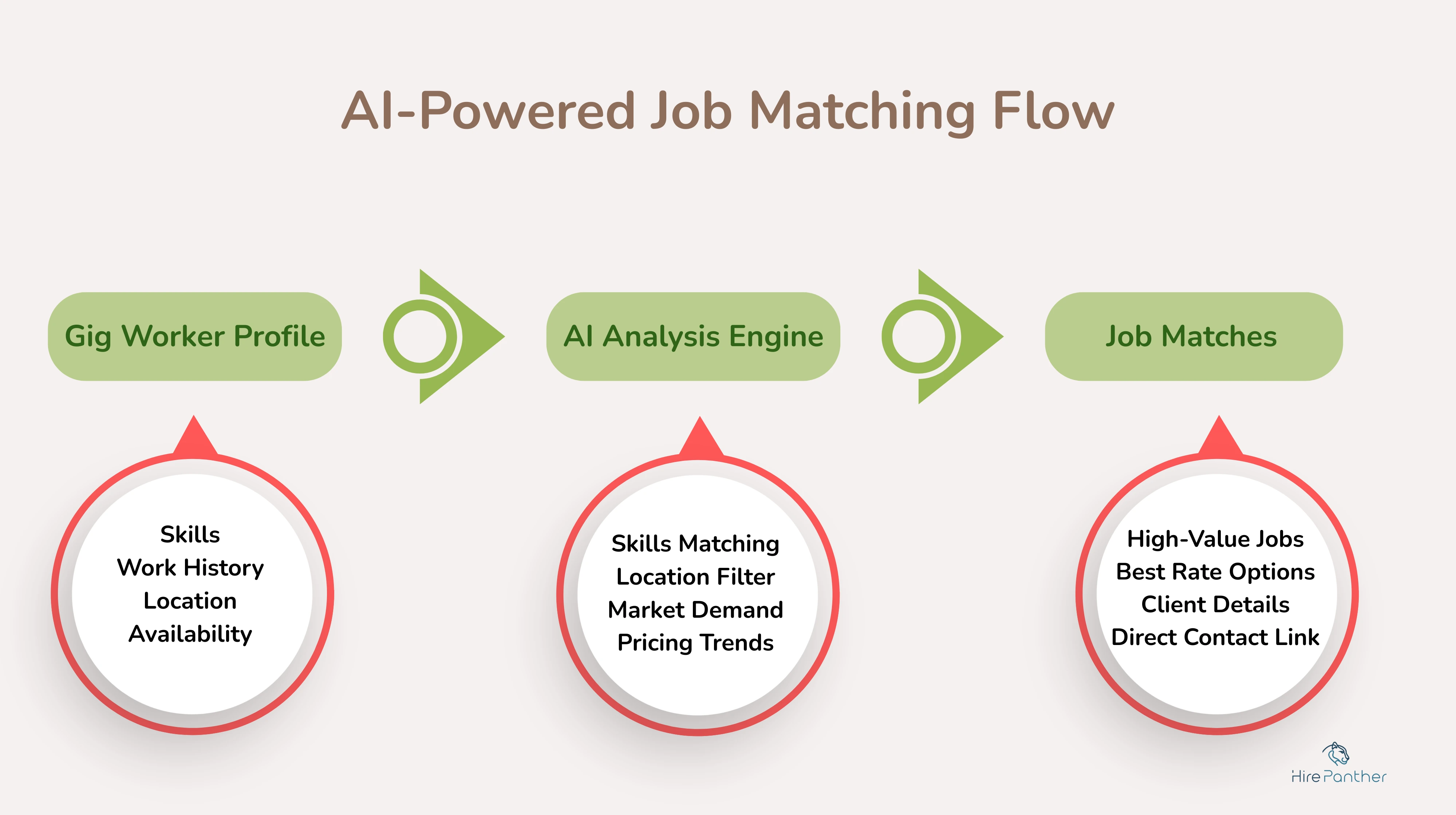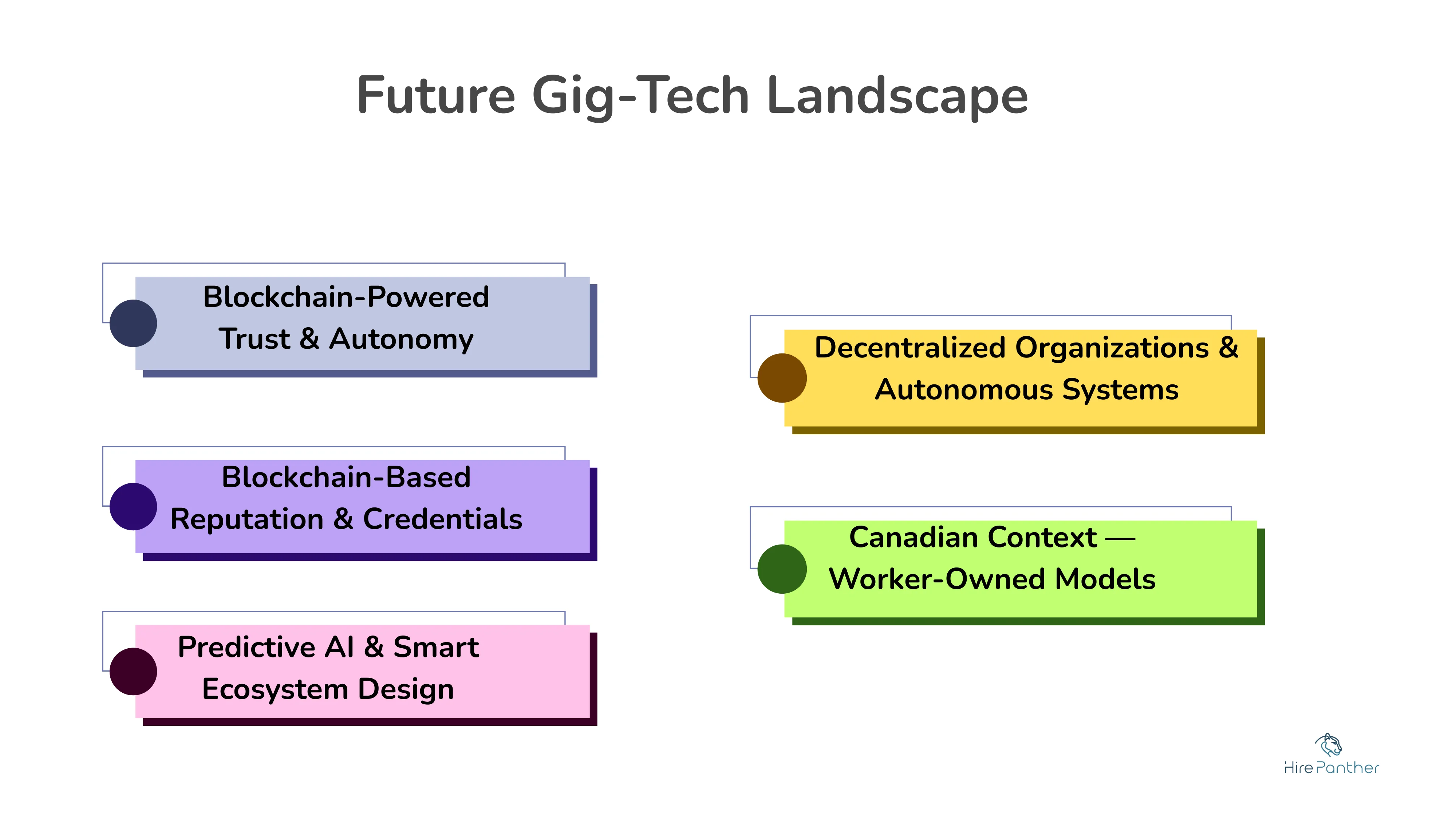The Impact of Technology on Canada’s Gig Workforce
- 15 Aug, 2025

Introduction: Technology as a Catalyst in the Gig Economy
Technology continues to redefine how Canadians find, deliver, and manage gig work. From mobile platforms to AI-powered job matching, today’s tools are enabling greater efficiency, flexibility, and access to income opportunities across the country.
In this article, we explore the ways technology is transforming the gig workforce in Canada in 2025.

1. Rise of Mobile Gig Platforms
Mobile-first platforms are at the core of gig work today. Whether it’s booking house cleaning, offering tutoring, or designing a logo, mobile apps allow users to:
- Create gig listings
- Communicate in real time
- Track job progress
- Receive instant payments
Popular Canadian gig apps now include location-based filters, user reviews, and AI-powered recommendations.
2. AI-Powered Job Matching
Artificial Intelligence is streamlining how gig workers find the right jobs by analyzing:
- Skills and work history
- Location and availability
- Market demand and pricing trends
This automation not only saves time but also boosts gig workers’ income by connecting them to higher-value clients.

3. Digital Payment & Invoicing Tools
Seamless, secure payments are crucial in freelance work. Tech tools have replaced manual invoicing and slow transfers with real-time systems such as:
- Instant e-transfers
- Crypto-enabled payments (in some advanced platforms)
- Automated tax and income tracking dashboards
These systems improve transparency and cash flow for Canadian freelancers.
4. Workflow & Project Management Apps
From Trello and Notion to industry-specific tools, project and task management apps help gig workers:
- Collaborate with clients
- Track deadlines
- Automate scheduling
- Store shared files and deliverables
This enhances client satisfaction while helping freelancers stay organized.
5. Remote & Hybrid Tech Infrastructure
Post-pandemic, remote work has become mainstream. Gig workers now leverage cloud-based tools like:
- Zoom for client meetings
- Google Workspace for content creation
- Figma for design collaboration
Such tools have made remote gig work viable from anywhere in Canada.

6. Learning Platforms for Upskilling
Gig workers increasingly use e-learning platforms to stay competitive:
- Coursera, Skillshare, and LinkedIn Learning
- On-platform certifications from gig marketplaces
- Niche tools like Dribbble (design) or Codecademy (tech)
These platforms contribute directly to higher quality gigs and increased earning potential.
Challenges of Tech-Driven Gig Work
While beneficial, tech adoption in gig work poses challenges:
- Digital Divide: Rural workers may lack access to high-speed internet
- Platform Dependency: Over-reliance on algorithms can reduce autonomy
- Privacy & Security: Managing client data securely is a growing concern
The Future: Smart Gig Ecosystems
Looking ahead, Canada’s gig ecosystem will likely integrate:
- Blockchain for work verification and contracts
- Predictive AI for income forecasting
- Decentralized platforms enabling more control for workers

Conclusion: Embracing the Tech-Enabled Gig Future
Technology is not just an enabler—it’s the foundation of the modern gig economy. For Canadian freelancers and gig workers, staying up to date with tech tools and platforms is essential for growth, stability, and competitive edge.
Stay updated with Canada’s evolving gig tech trends - subscribe to our newsletter for expert insights.
